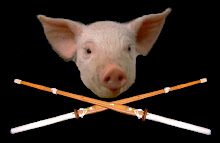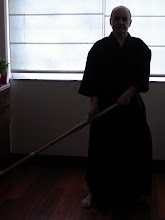Bienaventurados lechones, hoy Domingo día pastelero por excelencia os propongo un Plum Cake. Como siempre fácil y al alcance de cualquier Kendolechon con ganas de echarle huevos al asunto (en este caso tres)
Material:

3 huevos (lo dicho)
250 gr de harina
100 gr de Mantequilla
un pelín de margarina (o más mantequilla)
50 gr de pasas de corinto (que substituí por 60 gr nueces)
250 gr de fruta confitada (melón, cerezas,...)
1 sobre de levadura en polvo
50 gr de almendras crudas (que substituí por 60 gr de piñones
Métodos:
1.- Fundir la mantequilla, dejadla que se enfríe un poco y mientras está aún líquida id echando el azúcar y trabajad la mezcla
2.- Id echando los huevos uno a uno y trabajad con la mezcla antes de echar el siguiente hasta q esté completamente integrado
3.- A seguir incorporamos la harina ya mezclada con la levadura. Idealmente la tamizamos y la vamos echando en pequeñas cantidades para evitar grumos y obtener una buena distribución /integración de la misma con la masa que vamos elaborando. Si echamos cantidades pequeñas de harina de cada vez será más fácil la mezcla
4..- Ya podemos agregar las frutas y las vamos mezclando con la masa con gentil movimiento de brazo (alerta onanistas he dicho gentil movimiento)
5.- Ánimo que ya lo tenemos, ahora solo falta echar la masa en un molde rectangular para respetar las tradiciones plumcakeras y al horno a temperatura media mínimo una hora (en mi horno, un Siemens, lo cociné a 180º C. durante una hora, para obtener este resultado:
Tips & Triks:
a) Para que la fruta no se vaya al fondo por la gravedad mientras horneéis el pastel y os quede así de bien:
conviene enharinarla antes de lanzarla a la mezcla. Yo aproveché uno de los tamizados
b) Si usáis pasas de corinto una buena idea es hidratarlas mínimo media hora con agua fría (los q queráis darle un toque alegre hacedlo con moscatel)
c) Embadunar el molde con un poco de mantequilla o margarina antes de echar la masa para evitaros q se pegue al molde (una alternativa es utilizar papel de hornear)
d) Es muy importante la cocción de este pastel. Como hemos comentado con anterioridad ha de estar más o menos una hora pues si no el centro os quedará crudo. Si el horno es muy potente y ponéis temperatura a más se os tostará deprisa y no dará tiempo a que suba la masa. Cuando lleva más o menos 20 minutos la masa empieza a cuartearse en su superficie y sube un poco más. Si esto no ocurre ojo que igual la temperatura es fuerte a más y se os tostará por fuera y quedará crudo por dentro.
e) La receta original incluye almendras que yo substituyo por piñones, algo más caros pero más sabrosos y si vamos a gastar una hora de electricidad en el horno no seamos ridículos lechones! -a menos q os gusten más las almendras q de todo hay en la viña del señor- Si usáis almendras crudas peladas la idea es cortarlas en pequeños fragmentos (más o menos como los piñones de tamaño o algo menos)
Addendum: Ideas de decoración final.
Sobre el pastel podemos poner nueces, piñones, ...si vamos a hacerlo el momento es cuando hemos esparcido la masa en el interior del molde. Depositamos estos elementos sobre la superficie y al horno!
Una vez ya horneado y en el exterior podemos empolvarlo con azúcar polvo
Si preferís la fruta confitada (idealmente rodajas de naranja o cerezas), ésta se coloca ya con el pastel horneado y se cubre con una fina capa de mermelada. De hecho más que cubrir es pintar, mojad un pincel de cocina con la mermelada (idealmente de la misma fruta) y pincelad la superficie del pastel
Hala ya solo queda deciros ... A disfrutar cocinando y desgastando


